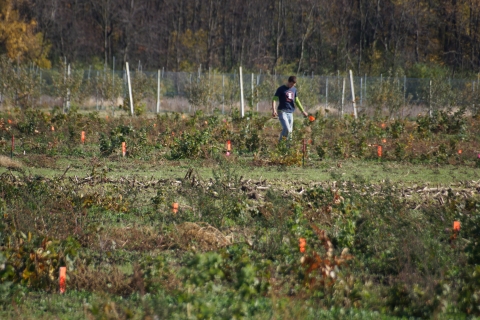You are here
Woody Perennial Polyculture (WPP) Research Site (Ongoing)
Recent Project Updates
-
12/20/2017This project seeks to strengthen student understanding of the farm-to-fork food system. This project's main goal is to upkeep, collection, and summarization data from the Woody Perennial Polyculture (WPP). The WPP was a student-initiated effort that...
-
6/30/2014New Update from the Woody Perennial Polyculture Research Site!Is this email not displaying correctly?View it in your browser Like on FacebookFollow on TwitterForward to a Friend WPP?A Woody Perennial Polyculture (WPP) is an assemblage of...
Project Family
-
Growing Local Foods
- Orchard Downs Community Gardens
- Sustainable Student Farm
- Tomato Processing and Packaging
- Woody Perennial Polyculture (WPP) Research Site
Associated Collections
Project Team
-
Primary Contact:
Kevin WolzProject Leader:
Kevin WolzTeam Members:
- Bruce Branham
- Michelle Wander
Themes
-
Primary Theme:
Other Themes:
Project Location(s)
This map is interactive! Click (or touch) and drag to pan; scroll (or pinch) to zoom.

